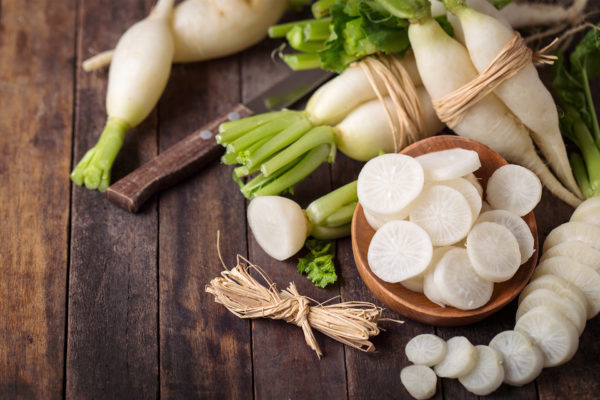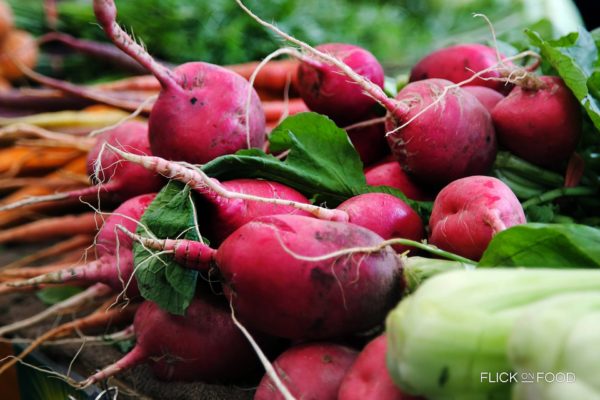
An heirloom vegetable with a brilliant color and a unique flavor. Try them raw with ginger
Origin
An heirloom variety of daikon and member of the mustard family, the watermelon radish—also called red meat radish—is little known in Italy. It is a vegetable originally from China, where it’s called Shinrimei or Xin Li Mei, meaning ‘inner beauty radish’. In the United States, the watermelon radish is also known as Rooseheart radish. Its exterior resembles a turnip both in size and color, but when sliced in half, it reveals another aspect—its brilliant fuschia insides textured with a sunburst pattern. And it’s not just the appearance that’s noteworthy—so is the flavor. It’s similar to a normal radish but less peppery, so it’s good even for more delicate palates. Any spiciness is concentrated in the skin, so to remove it completely just peel right down to the purple insides without leaving any white or light green skin.
_
THE IMMERSIVE FOOD EXPERIENCE
WITH PIANTANATURA
In the Kitchen
Watermelon radishes are crunchy with a more delicate taste than a other varieties. They’re excellent both cooked and raw, to add as a side dish or on their own. But to savor the full flavor, it’s recommended to eat them raw: cut them into thin slices and optionally add a bit of salt and butter or olive oil. Or if you want to make a delicious salad, just add algae, ginger and scallions for an explosion of freshness and flavor. If you want to really wow your guests, you could also make them into chips as a pre-dinner appetizer. Peel them if you want to only bring out their sweetness, or thinly slice them without removing the skin to maintain a bit of their peppery kick.
Did you know
This is a vegetable with a long history, in addition to being delicious and full of health benefits. Rich in vitamins and minerals like vitamin C, calcium, phosphorus, magnesium and potassium. They’re perfect for people with diabetes since they have a very low glycemic index. They’re also excellent after a meal because they help aid digestion and support weight loss. Many studies have indicated that they have anti-inflammatory and anti-tumoral properties. They’re a great diuretic and laxative, help regulate blood pressure, and support the circulatory system to keep it working well.







